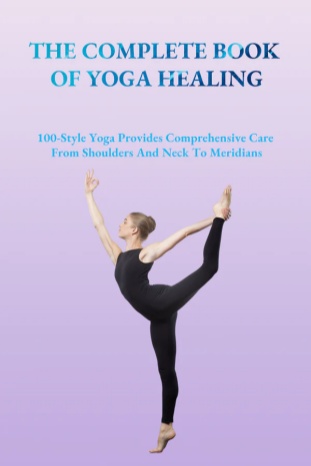Carrying Water and Chopping Wood Are All Zen Meditation-Part 2
Excerpt from Master Sheng Yen’s Teachings
Recommended Reading Master Sheng Yen’s book:
? Zen Meditation Wisdom: The Q&A of Nearly Three Hundred Meditation Questions, Encompassing All Aspects of Meditation — In this book, Master Sheng Yen offers clear, profound answers to real-life questions about meditation, practice challenges, and inner transformation.

Zen: A Life of Non-Attachment
Life manifests both as the continuity of a single lifetime and as the continuum of many lifetimes and eons. The ordinary person lives by the force of karma, drifting endlessly through the cycle of birth and death. In contrast, enlightened beings and bodhisattvas journey through the sea of samsara by the power of great compassion and vows, guiding countless sentient beings to liberation. Though both experience birth and death, the ordinary person does so with helplessness and suffering, while the bodhisattva accepts it with equanimity and purpose. The essential difference lies in whether the mind is attached or free from attachment.
A realized Zen practitioner has a mind free of attachment—unconcerned with life or death, or even with transcendence. Having realized selflessness, there is no “I” to undergo samsara. Having realized emptiness of all appearances, there is neither the appearance of birth and death nor of nirvana. In other words, there is no self and no phenomena; thus, one abides neither in samsara nor in nirvana. This is the state of great liberation, true nirvana. Hence, great Zen masters have no fear of life or death.
Consider the following examples:
(1) Yongjia Xuanjue (665–713), upon first meeting the Sixth Patriarch Huineng, said:
“Birth and death are of utmost importance, and impermanence is swift.”
Huineng replied:
“Why not realize the unborn, and be free from the swift?”
In his Song of Enlightenment, Yongjia wrote:
“In dreams there clearly are six realms, but when awakened, all is void.”
“Countless times I’ve lived and died, floating endlessly. But since my sudden awakening to the unborn, I have no fear of honor or disgrace.”
Before Huineng’s teaching, Yongjia was deeply concerned with the problem of birth and death. After awakening, he realized that grasping at life and fearing impermanence is delusion. True understanding lies in recognizing that birth is itself unborn—thus, impermanence loses its sting. To awaken is to see that the dreamlike illusion of life and death disappears in the light of truth. “Unborn” means unattached—free from delusion and duality. To seek nirvana out of fear of death is still attachment. When the mind is free, it fears neither samsara nor craves nirvana. This is the Zen attitude toward life.
(2) Dazhu Huihai, a disciple of Mazu Daoyi, said:
“Seeking great nirvana is itself karmic activity. To reject defilement and seek purity is karmic activity.”
He also said, “There is originally no bondage; why seek liberation? Simply act directly and straightforwardly—this is the supreme path.”
Nirvana and samsara, defilement and purity, bondage and liberation—all are relative. Without samsara, there is no nirvana; without defilement, no purity; without bondage, no liberation. The key is to let go of all attachments. When the mind is unattached, one neither fears samsara nor seeks nirvana. This is a life of spontaneity, freedom, and vitality—the essence of Zen.
Recommended Reading:
? Zen Meditation Wisdom: The Q&A of Nearly Three Hundred Meditation Questions, Encompassing All Aspects of Meditation
Zen Is Vibrant Living
Zen is not a religion or philosophy but a way of life—a perspective, a method, and an experience. The Zen way is not to seek or avoid anything, nor to cling to favorable or unfavorable conditions. A Zen practitioner lives among ordinary people, doing what needs to be done—not out of desire, not for reward, but simply as a natural response to life’s responsibilities.
The core principle is: the mind neither follows conditions nor separates from them. Not being led by conditions is the power of meditative stability; not separating from conditions is the function of wisdom. This means being still yet aware, aware yet still—thus free from clinging, active without confusion, clear without effort.
Ordinary people are disturbed when their minds move, and blocked when they try to remain still. But for the Zen practitioner, movement is not delusion, and stillness is not escape. Here are two examples:
(1) From the Platform Sutra of the Sixth Patriarch:
“It is neither the wind nor the flag that moves, but your mind that moves.”
When two monks argued whether it was the wind or the flag that was moving, Huineng pointed out that it was their minds that were moving. It is not wrong to recognize physical movement, but to cling to one side or the other is the root of confusion. The ordinary mind clings and discriminates; the awakened mind moves but does not attach. It is like a mirror—reflecting clearly without holding on.
(2) Also from the Platform Sutra:
“Buddha-dharma is in the world; awakening is not apart from worldly life.”
“In the dark house of affliction, we must give rise to the sun of wisdom.”
Zen is not escapism or world-rejection. True Zen is fully engaged, vibrant, and grounded in everyday life. It is neither abstract theory nor blind faith—it is freedom in action. When we learn not to react with craving or aversion to changing conditions, we discover peace and clarity in every moment. Enlightenment is found not outside life but within it.
Zen Is Carrying Water and Chopping Wood
In ancient times, Zen monks lived simple, self-sufficient lives. Everyone participated in daily tasks such as fetching water and chopping wood. Thus the saying by layman Pang Yun:
“Miraculous powers and sublime activity—carrying water and chopping wood.”
This expresses how everyday tasks, when done with mindfulness, are themselves expressions of enlightenment. In modern society, daily life is more complex, yet Zen remains relevant. Whether in the home, workplace, or any field, Zen is about being fully present, acting wisely and freely.
Consider the following Zen stories:
(1) A monk asked Dazhu Huihai: “Master, do you still practice cultivation?”
He replied: “Yes, I do.”
“What is your practice?”
“When hungry, I eat; when tired, I sleep.”
(2) A monk asked Weishan Lingyou: “What is your path?”
He replied: “One bowl of porridge, one meal of rice.”
(3) A monk asked Zhaozhou Congshen: “I am confused, please guide me.”
Zhaozhou asked: “Have you eaten your porridge?”
“Yes.”
“Then wash your bowl.”
(4) Huangbo Xiyun said:
“All day I eat, yet never taste a grain of rice.
All day I walk, yet never step on the earth.”
These examples point to the simple truth that daily life—eating, sleeping, walking—is the field of awakening. Ordinary people chase after abstract ideas of the “Way,” but Zen reveals that liberation lies in releasing self-centered judgments and desires.
Two years ago, a layperson gave me a box of delicious grapes. After offering them to the Buddha, he asked me to try them. I praised them as sweet and fragrant. A nearby disciple said, “Look, Master is greedy!” The layman laughed joyfully.
Two days later, more grapes arrived. I said jokingly, “I’m not starting a winery—why so many grapes?”
They replied: “Didn’t you say you liked them?”
I smiled and sighed:
“They are delicious—that is a fact. But enjoying them is not the same as craving them.”
As practitioners, we should maintain normal preferences, but we must not be swayed by desire or aversion. That is the path.
Recommended Reading:
? Zen Meditation Wisdom: The Q&A of Nearly Three Hundred Meditation Questions, Encompassing All Aspects of Meditation
Zen Transcends East and West
Zen cannot be captured by language, symbols, or logic. It is the transmission outside the scriptures, pointing directly to the mind.
(1) In the Platform Sutra, when Huineng arrived from the south, the Fifth Patriarch asked:
“What do you seek?”
“To become a Buddha.”
“You’re from the south—a barbarian. How can you become a Buddha?”
Huineng replied:
“People may be from north or south, but Buddha-nature knows no such distinction.”
(2) Zhaozhou once asked a monk: “Where are you from?”
“From the south.”
“Then why come north? Isn’t the Dharma in the south?”
“Does the Dharma have a north or south?”
Zhaozhou replied: “You’re just a board-carrying fool.”
Here, Zhaozhou is not contradicting Huineng—both are using language skillfully to break attachment to dualities. The goal is to awaken beyond words, not to debate geography.
(3) Xitang Zhizang, a disciple of Mazu, visited National Master Huizhong. When asked about Mazu’s teachings, Zhizang walked from east to west.
Huizhong asked: “Is there more?”
Zhizang walked back from west to east and said, “I’ve already shown you.”
This exchange, seemingly simple, embodies the dynamic freedom of Zen. East and west, moving or still—none are fixed. Wherever the mind abides, there is bondage. True freedom lies in letting go.
You may or may not follow Buddhism, but the open, unattached heart of Zen is something everyone can learn from. It leads to a richer, more joyful, and freer life.
?♀️ Continue the Journey of Insight
If this article has resonated with you, consider exploring more of Master Sheng Yen’s works. His writing is calm, wise, and refreshingly practical—ideal for anyone on the path of self-discovery, meditation, and mindful living.
1.Zen Meditation Wisdom: The Q&A of Nearly Three Hundred Meditation Questions, Encompassing All Aspects of Meditation
2.Getting The Buddha Mind : Zen Meditation Handbook for Realizing Buddha Nature
3.The Fundamental Practice of Zen Meditation Zazen
More expert meditation books are waiting for you to explore.
Keep exploring more inspiring content to enrich your mind and spark new insights:
- 90% of Your Worries Never Come True: A Mindful Approach to Anxiety
- The Secrets a Therapist Won’t Tell Someone with Depression…
- 50 Subtle Signs That Reveal a Person’s True Nature
- The Secret to Living 100 Years
- The Secret to Making Your Brain 10 Years Younger
- The Kind of Relationship That Makes Someone Addicted to You Is Never About Sincerity
- The Gentle Power of Slowing Down: A Parenting Reflection
- Therapist’s Perspective: The Healing Code of Nonviolent Communication
- True Intimacy Is Not Fusion but Reflection: On Boundaries and the Art of Connection
- When a woman truly awakens, even destiny must give way.
- Eight Habits You Must Change in Interpersonal Communication
- How Meditation Can Help Alleviate Tension in Close Relationships
- Let Go of Their Lessons, Walk Your Own Path
- Top Meditation Techniques for Better Sleep
- The Five Types of Negative Energy in Parents That Weigh Most Heavily on Their Children
- How Can We Keep All Relationships at Their Best?







